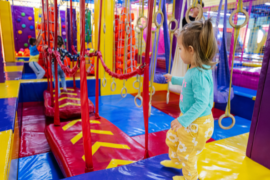In fact, it’s very easy for a teacher to improve a student’s academic performance. Do you want to know how? Use tips that professional from Essayassistant.org prepared for you .
- Motivation by personal example. Students’ interest in the discipline studied is determined not only by the professional presentation of the educational material but also by the personal qualities of the teacher. A teacher who is not late has a friendly attitude, does his/her work seriously and responsibly, checks independent and practical students in time is appreciated.
- Keep your promises. Students should not be cheated. If promised to show a movie or make an interesting test, conduct a game or go on an excursion, it is necessary to implement the intended goals.
- Formation of a positive attitude towards the profession. The leading activity of the period of adolescence is the choice of one’s place in life and professional destination, so it is necessary to encourage and approve students’ choice, to emphasize important professional competencies and specific issues.
- Friendly, calm tone, creating a positive microclimate in the group. A positive, welcoming attitude, and even, a friendly tone is the key to effective work. The intonation should be enough to emphasize what is important, to stress it, to make people think.
- Providing maximum freedom to the students. Of course, here freedom is understood in a specific sense. Allow the group to choose the method of the current assessment of the knowledge, the form of performance of individual independent work, the theme of the report, or the variant of the task. Everyone wants to feel involved in some process, to know that their point of view is taken into account – this increases motivation.
- Celebrate students’ successes and praise publicly showcase students’ achievements. Praise, especially public praise, with descriptions of the merits and distinctive features of the work performed adds to the student’s self-confidence, increases their intrinsic motivation and desire to achieve a similar result again, increasing it over time.
- Interest in students’ personal experience in professional activities and their opinions on certain issues. The teacher’s interest in students can be mutual. Discussion of any issues, joint solutions of arising problems, organization of discussions, and consideration of situational tasks are important methods not only of organizing the educational process but also of establishing quality communication between the instructor and the student.
- The student-teacher relationship. It is very important for students that the teacher is their mentor, who they can turn to for help (of course, even with most stupid questions).
- Respect for students. Whatever the student, he or she is a person who wants to be treated accordingly.
- Interest in the subject. There is no more effective way to motivate students than to get them interested in their subject.
- A well-designed system for organizing the learning process is the key to successful motivation. Students who are “used” to the instructor and his/her requirements will spend less time on the organizational aspects and comprehension of what is going on in the class.
- Announcing the purpose of the lesson. Informing at the beginning of the lesson what students will learn by listening carefully and completing tasks is aimed at creating internal incentives for motivation. You can even structure the process of communicating objectives using the “opposite” method, i.e., “by distracting yourself and not listening attentively today, you will never learn that…” This method appeals to even the most fidgety students.
- Emphasis on the immediate application of the knowledge gained. There should be a “theory to life connection” that increases student interest and attention.
- Don’t lecture from a textbook or sit at a desk all the time. Again, psychologists have proven that a person perceives conversational speech, lively storytelling, and conversation with greater success. A teacher who is absorbed in a book not only cannot follow the audience’s reaction to his words but also gives the impression of an uncoordinated, ignorant, confused person. The teacher, who is constantly at his or her desk, is fenced off from the students by this desk.
- Visiting exhibitions and museums. Of course, various forms of classes, a differentiated approach to assessing knowledge, and other methods of increasing interest in the educational process are effective. But still, the group would love to go somewhere.
- Publicity of each student’s success. In the course of his discipline, the teacher can keep a record of the completed tests, without which the student is not allowed to pass the final exam (test, control work). A table with the names of students and the number of papers (with grades) they have completed is posted on a stand in the classroom. Making everyone’s results available for all to see motivates students.





